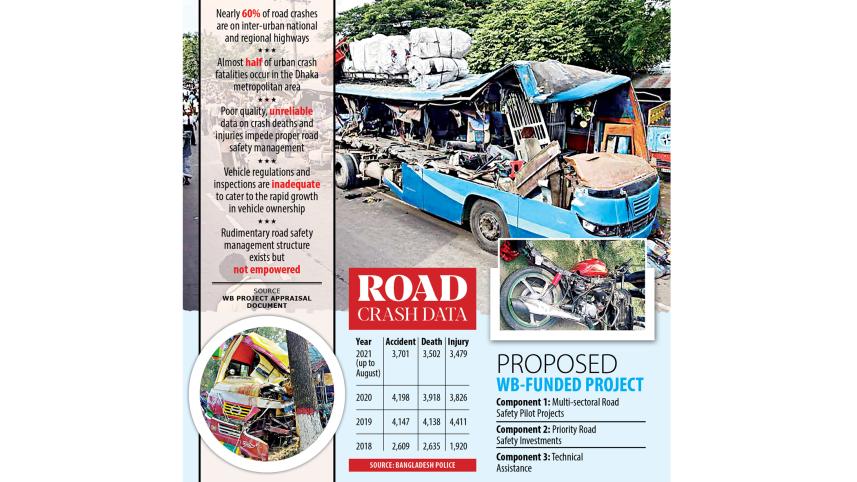Take stronger actions to make roads safe

Although a number of bodies and organisations exist for the sole purpose of curbing road accidents in Bangladesh, the reality is that we are still losing precious lives on our roads on a daily basis. On January 2, 2022, nine people, including three minors, were the latest to join this endless procession after fatal crashes in different districts. This comes after a year that, up to the month of August, saw as many as 3,502 people die and 3,479 get severely injured in road accidents. By any measure, this is downright unacceptable.
A great deal has been deliberated in seminars over the decades, and many causes of accidents have been identified, but at the end of the day, very little has been done to put a brake on the killer vehicles. In an appraisal report prepared by the World Bank for financing a road safety project in Bangladesh, the following observations were made, "Different bodies exist in Bangladesh to ensure road safety, but they are not empowered and lack effective coordination to get (the) expected outcomes. These organisations are also not held accountable. Besides, the fund allocated for road safety action plans is insufficient, not prioritised, and has never been institutionalised." The result is a disaster that's been decades in the making, with the rise in the road crash fatality rate between 1990 and 2017 purported to be three times higher than that across the rest of South Asia.
The World Bank in its report further observed that, though a road safety management structure exists in Bangladesh, it is not sufficiently empowered or is hardly held accountable for safety outcomes. It may be recalled that the National Road Safety Council (NRSC), established in 1995, is responsible for preparing safety strategies aimed at reducing accidents. But how much this council could do remains a big question. There are reports that the functioning of numerous committees has been hampered because of poor internal communication, a lack of coordination and integration, and a scarcity of resources. Undue interventions, lack of professional persons in committees, and setting impractical goals are some of the obstacles that make the task of experts difficult.
This must stop. The authorities must step up their game. If we are to make any headway in preventing road accidents ever, we must sufficiently empower and hold to account these bodies and committees, and ensure that they work collaboratively. "Road safety is no accident," as experts say, meaning it cannot happen on its own; it needs careful planning, proper logistics and implementation by those responsible.



 For all latest news, follow The Daily Star's Google News channel.
For all latest news, follow The Daily Star's Google News channel.
Comments